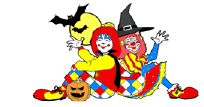
Before Inflating:
You might be tempted to stretch the balloon. Although this may make it a little easier to inflate the balloon, it will more likely change the shape of the balloon and possibly weaken it enough to pop when you start twisting. Stretching the balloon can be useful if you want to fill it differently, with, say, a bulge in the middle, but that's about it.
The best way to fill the balloon is with one large breath without pausing. Unfortunately, most people can't do that (unless you're full of hot air), but the fewer breaths it takes to inflate the balloon, the smoother the balloon will look and the easier it will be to work with. This is when large balloon floor pumps and motorized balloon inflaters come in handy.
Three common Ways to Inflate a Balloon:
By mouth - many people find this more difficult. Seal lips around the nozzle of the balloon as if you were blowing through a straw. Take a deep breath and blow a short burst of air using your cheek muscles to start the balloon. Take another breath of air and finish blowing up the balloon using your chest and diaphragm.
By pump - the hand pump is less physical and very practical on hot summer days. Hold nozzle end of the balloon on the pump with one hand and work the pump with the other hand. The strokes should be even and parallel with the pump shaft to prevent the shaft or head from breaking.
By mechanical pump (compressor) - the initial investment of a air compressor pumps do cost more but very rewarding if you are doing many balloons or multiple balloon sculptures. No physical effort is required and a single battery charge will last for hours.
Next:
Never inflate your balloons to the fullest extent (i.e. to the very end), as each twist will use up some of the balloon and force air toward the end of the balloon.
If you have overfilled the balloon, release a small amount of air before tying off the balloon. This is referred to as "burping the balloon."
When twisting the balloon, always twist in the same direction. This will prevent it from unraveling or untwisting.
Always inflate your balloons away from a spectators face and your own face. This will minimize a possible injury if the balloon breaks.
A good practice is to always hand the balloon to the parent of a small child. Small children have a tendency to bite balloons, which could cause injury to the child if the balloon bursts.
When making balloon animals for a large group, make only one type of single-balloon animal to insure that all children will get a balloon in the time you are scheduled to be there.
Try to make your balloon animals the last forty-five minutes to an hour of your function. This will minimize children coming up to you that already have a balloon and want another or a replacement.
